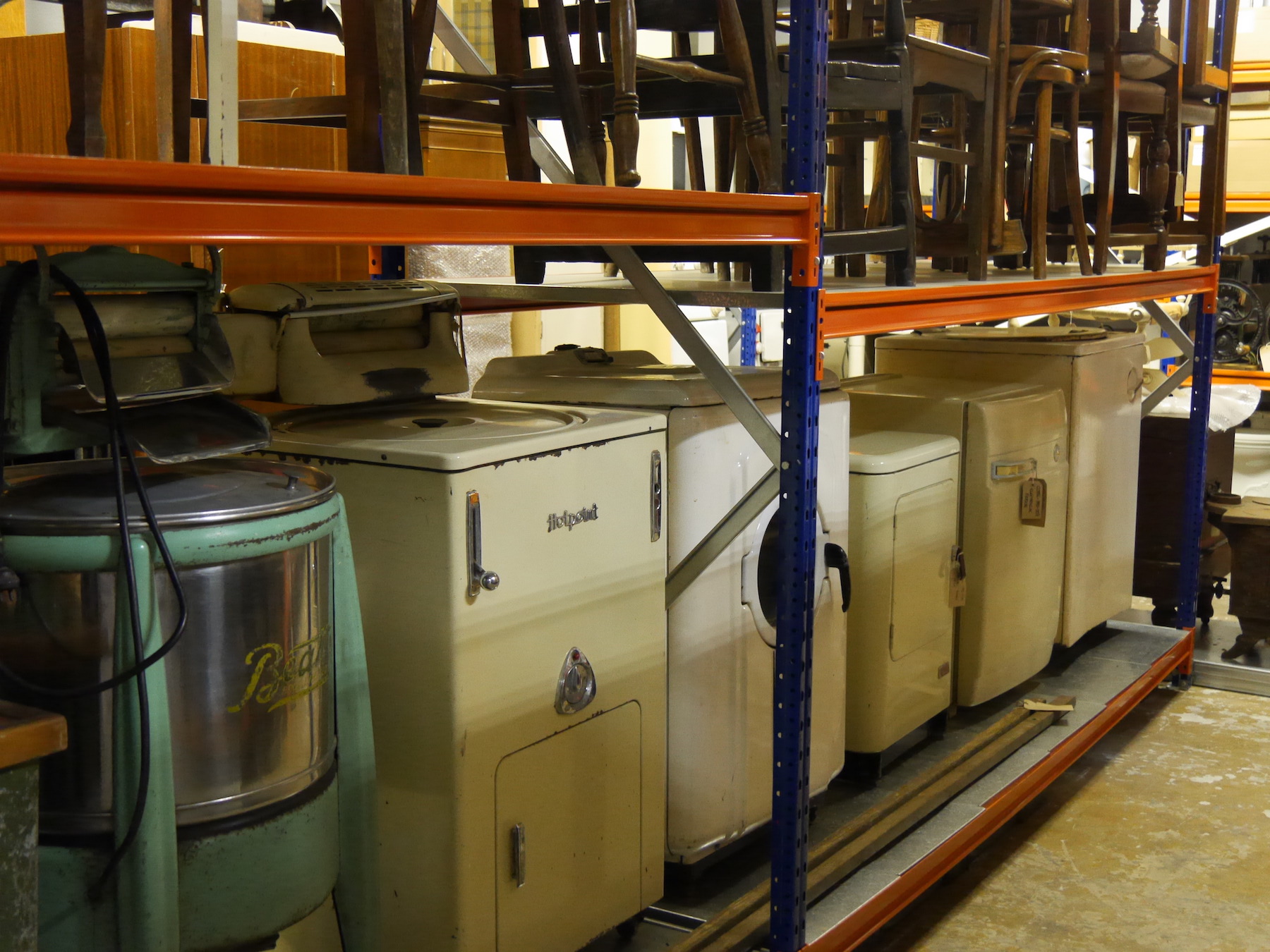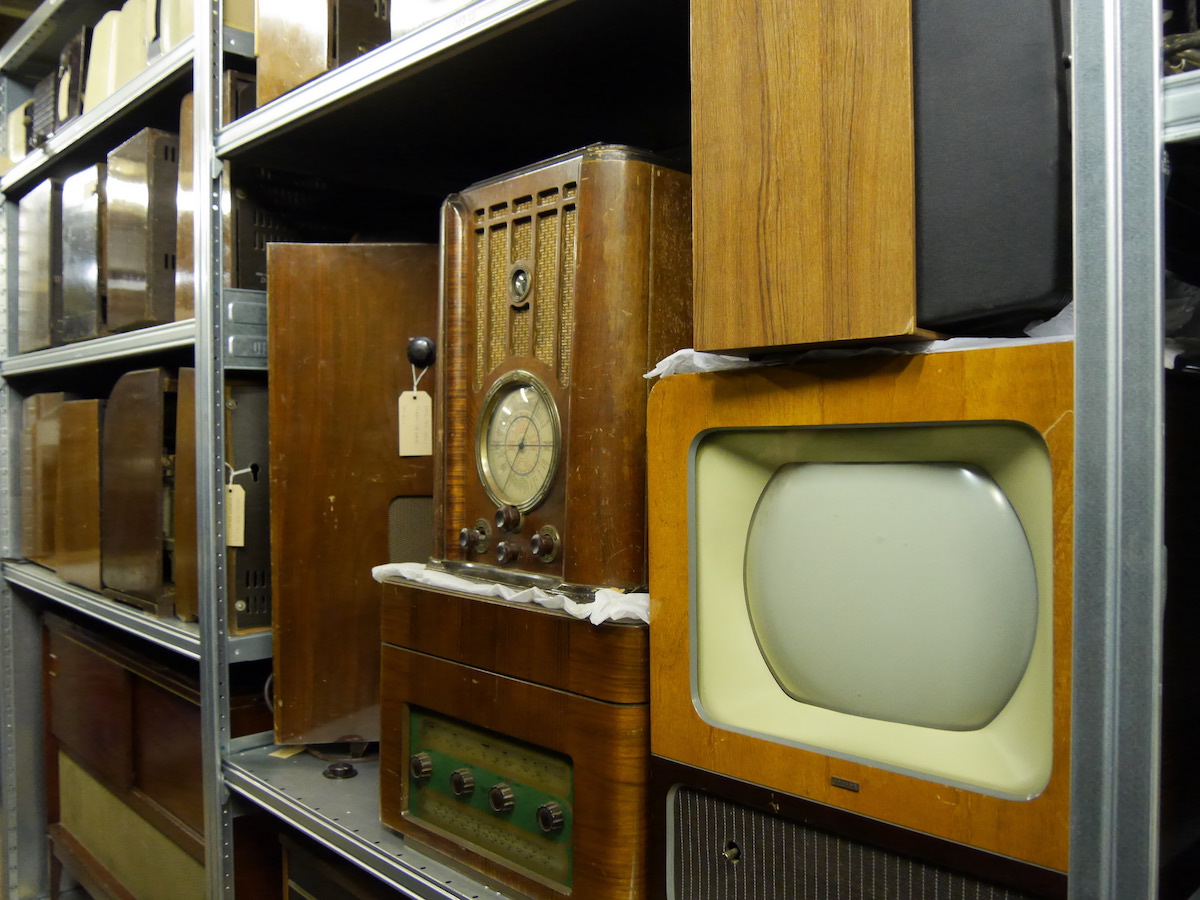Museum storerooms
Why is a visit to the museum storage areas so compelling? I have been into so many by now and I still feel that quiver of excitement at being allowed to peek behind the scenes. I know that I am not the only one who feels this. For many years I have taken students to visit museum storerooms – guided around by friendly and knowledgeable curators – and they always listed it as one of their favourite activities, chatting about it with excited anticipation and recollection.
Going backstage is probably always at least a little thrilling. As Erving Goffman (The Presentation of the Self in Everyday Life, 1959) told us, the front-stage is that of managed presentation of the self. The back, by contrast, is where we might see things unadorned, in their more real or raw state. So crossing that line feels like a move into somewhere more authentic, a space that we don’t yet know, that might have secrets to reveal, or even the potential to turn us into knowing distrusters of the managed front-stage. It is, even if just a little bit, dangerous and risky. This romantic pull of the back-stage – its promise of revelation – even propels some of us to become anthropologists.
Backstage for Goffman usually meant an untidy reality, a place where there was no longer a need to keep up impressions. The Shetland Island restaurant kitchen that provided one of his telling cases was a place of relaxed body postures, socks drying on the oven, and pats of butter surreptitiously reshaped for sending back out into the restaurant.
Going backstage feels like a move into somewhere more authentic, a space that we don’t yet know, that might have secrets to reveal, or even the potential to turn us into knowing distrusters of the managed front-stage.
Museum storerooms don’t entirely fit this kind of back-stage. For although they may well be untidy and rules may be broken – beards of statues ham-fistedly glued back on or rare insects species allowed to fall to dust – their guiding motif is a quest for order. Museum storerooms are usually lined with shelves on which objects are arranged by type in rows, or in drawers labeled for content, or stacked up storage boxes. Shelves sometimes stretch a long way and high up; in better-funded museums they may slide, operated by turning a wheel, so that even more can fit within the space; or there may be ladders or even motorized cherry-pickers to reach those filed high up. Almost always, museum storerooms – and I have visited so many of so many kinds – feel full to the limits, making me wonder how more stuff can possibly fit there. (Sometimes it can’t – but that is another story for another time.)
So if museum storerooms are orderly places, what is it that still makes them compelling, and maybe even more compelling than so many other backstage spaces? Partly, I think, it is that we know that museum storerooms contain treasure. What is there has been selected from the humdrum of life. It is made special. This is true of the things on display in the galleries above too, of course, so this cannot be the whole answer. The fact that we might get to see the full extent of the treasures hidden away is part of the fascination. But it is still not all of it.

Also making the storeroom so intriguing is its apparent capacity to tame and order so much stuff. It is hard not to marvel at the enormous labour that must have been involved in gathering and sorting and labeling and organizing and cataloguing and placing and dusting and being interested in all of these myriad things. It speaks of an immense respect for things, for objects.
It is hard not to marvel at the enormous labour involved in gathering and sorting and labeling and organizing and cataloguing and placing and dusting and being interested in all of these myriad things. It speaks of an immense respect for things, for objects.

That there are people who dedicate so much of their lives to this is also part of the fascination. I find myself caught between serious admiration – how can they care about these things so much? – and a kind of disbelief – can it really be worth it? In the subterranean world of the museum storeroom, I revel in the details, hanging on the stories the curators tell, captivated by the things I encounter – a Chinese fan, a stuffed sparrow, a television that I recall from my childhood. I think I too could be a thing person. Or that perhaps some corner of myself already is.
In the museum storeroom, I learn, maybe even more powerfully than in the galleries above, about the hefty value that our heritage-cultures put on things. I see that they can be ordered, managed, restrained. I also see how they can jump out and ensnare the passer-by with their funny characteristics – the stare of the carved head, the reach of the crab’s claw, the faded blue-green of the 1950s domestic appliance. Sometimes their best friends, the curators, help in this by weaving stories around them.
In so many storerooms I also see how objects challenge the ordering attempts – how they start piling up casually on tables, unruly, hands-on hips, telling the curator that they can’t be bothered to comply with being catalogued and put away. The real rebels refuse to fit any existing classifications and end up in corners, or drawers or cupboards, simply marked with ‘unclassified’, ‘for filing’, or ‘X’ or nothing at all.
In the storeroom, then, we experience the more or less successful attempt to bring the teeming mass of objects out there in the world into some kind of order. At the same time, we see how the individual thing can retain its significance and potency even within the amassed collective. In the museum storeroom we learn that it is possible for things to matter and for a long time.
Alongside the thrill of getting into the storeroom, though, is also a kind of sadness. So many of these things, although specially selected to be saved for the future, will never find their way back out onto the galleries. It is hard not to think of the storeroom as a kind of grave. If it is so, though, it is one in which the ghosts may wake and come to haunt us.
